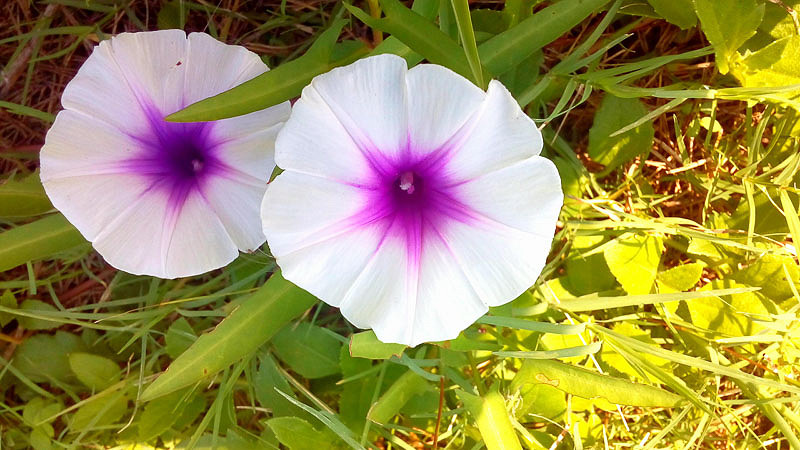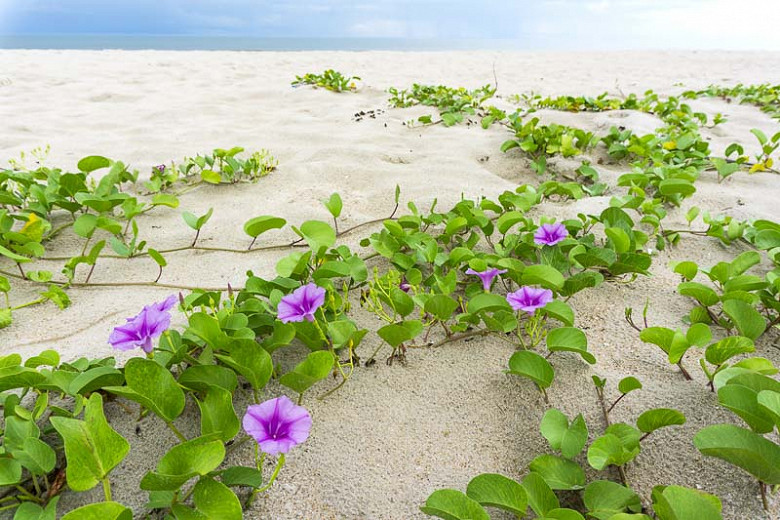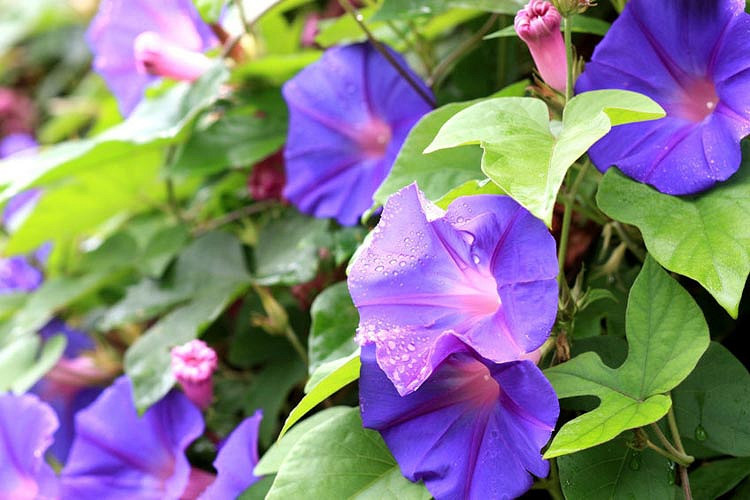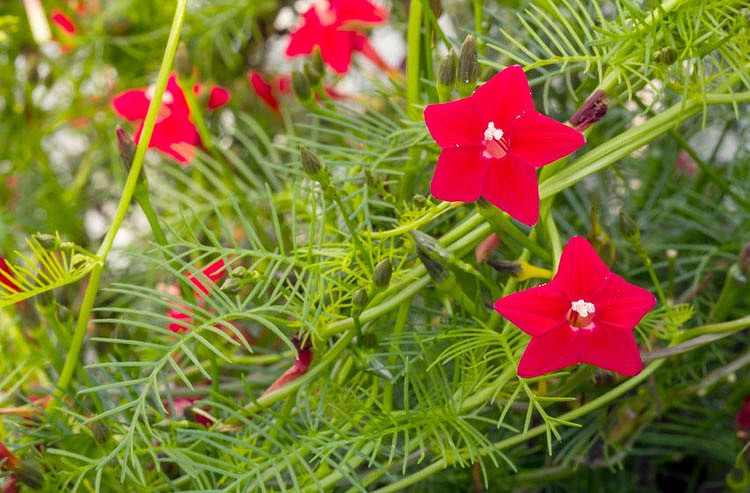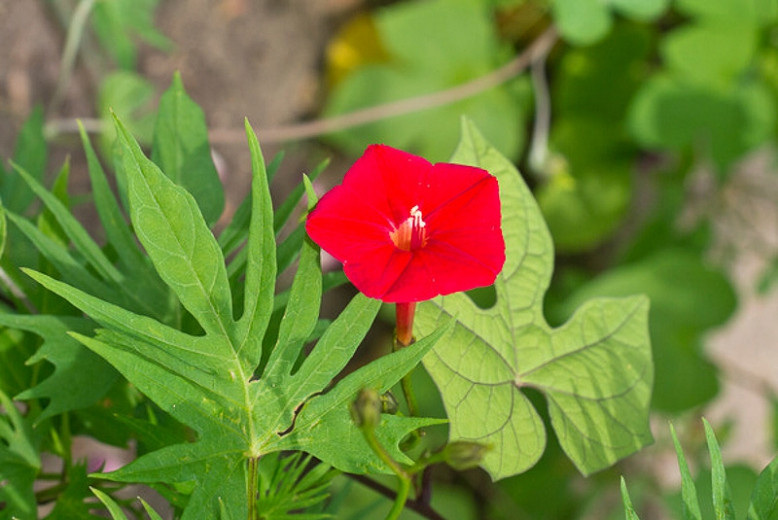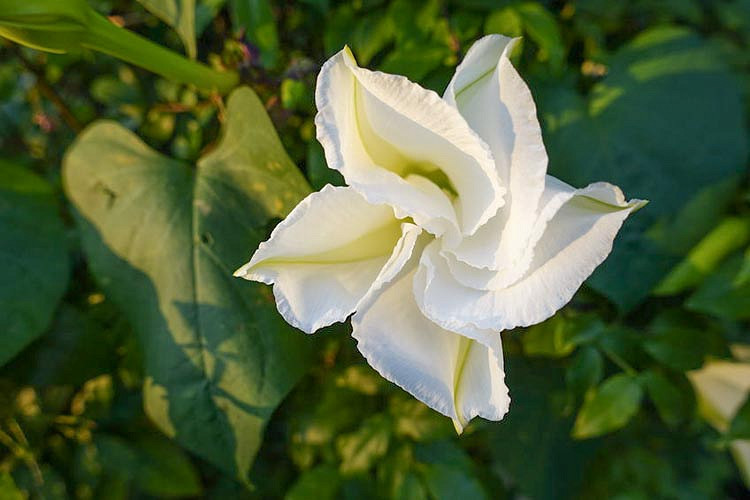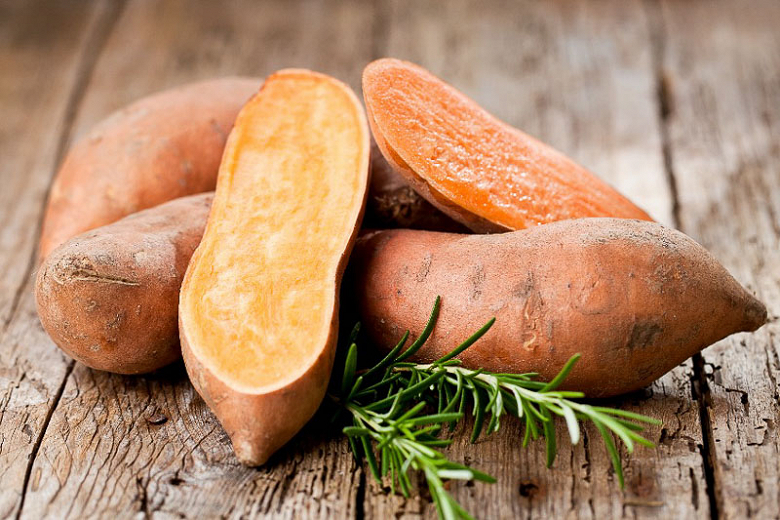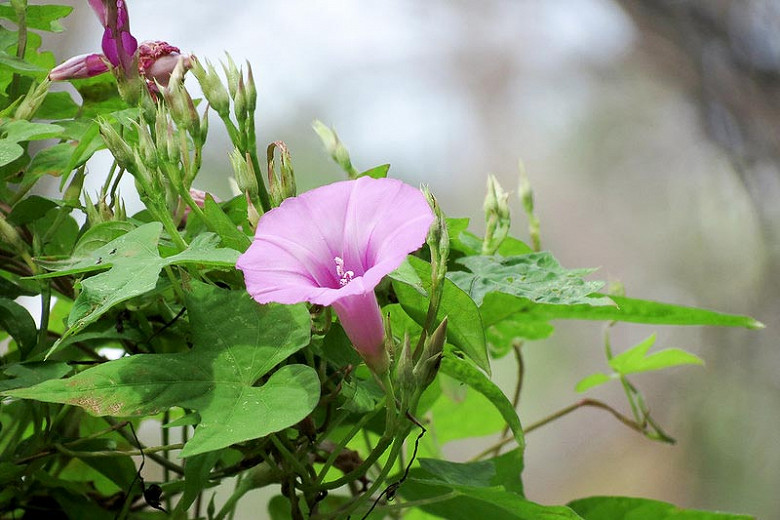Ipomoea pandurata (Wild Potato Vine)
Ipomoea pandurata (Wild Potato Vine) is a large, twining or trailing perennial vine with long stems clothed with olive green, heart-shaped leaves, 3-6 in. long (7-15 cm), adorned with a pointed tip and reddish purple petioles. From late spring to early fall, large, funnel-shaped, white flowers, 2-3 in. across (5-7 cm), with deep purple throats appear in clusters in the leaf axils. Blooming for about 2 months, the flowers bloom during the morning or during the afternoon on cloudy days. They give way to 2-celled capsules that contain 2-4 seeds. The root system produces a large tuber that can lie several feet beneath the ground surface and weigh up to 20-30 lb. The common name of this Ipomoea species refers to the large tuberous root, which is edible after being cooked. Wild Potato Vine climbs adjacent vegetation or sprawls across the ground in open areas. Perfect to hide an unforgiving fence, climb a wall or scramble through arbors and trellises.
- Fast-growing, this perennial vine will grow up to 15-30 ft. tall (450-900 cm) and 3-6 ft. wide (90-180 cm).
- Thrives in full sun to part shade in average, moist, well-drained soils. Can tolerate dry soil after it has become established. Drought tolerant.
- Great for pergolas, walls, fences, or as a ground cover.
- Self-seeds easily without being invasive. Removing dead flower heads to prevent self-seeding is recommended.
- Virtually pest and disease free. This plant is difficult to eradicate from the landscape due to its extensive root system.
- This plant has low severity poison characteristics.
- Toxic to dogs, toxic to cats, toxic to horses.
- Native to North America.
Requirements
| Hardiness | 6 – 8 |
|---|---|
| Plant Type | Climbers, Perennials |
| Plant Family | Ipomoea – Morning Glories |
| Exposure | Full Sun, Partial Sun |
| Season of Interest | Spring (Late)Summer (Early,Mid,Late)Fall |
| Height | 15' – 30' (4.5m – 9m) |
| Spread | 3' – 6' (90cm – 180cm) |
| Water Needs | Low, Average |
| Maintenance | Average |
| Soil Type | Chalk, Clay, Loam, Sand |
| Soil pH | Acid, Alkaline, Neutral |
| Soil Drainage | Moist but Well-Drained, Well-Drained |
| Characteristics | Showy |
| Native Plants | United States, Midwest, Illinois, Indiana, Iowa, Kansas, Michigan, Missouri, Nebraska, Ohio, Northeast, Connecticut, Delaware, Maryland, New Jersey, New York, Pennsylvania, Southeast, Alabama, Arkansas, Florida, Georgia, Kentucky, Louisiana, Mississippi, North Carolina, South Carolina, Tennessee, Virginia, West Virginia, Southwest, Oklahoma, Texas |
| Tolerance | Dry Soil |
| Attracts | Hummingbirds |
| Garden Uses | Arbors, Pergolas, Trellises, Ground Covers, Walls and Fences |
| Garden Styles | Informal and Cottage, Prairie and Meadow |
